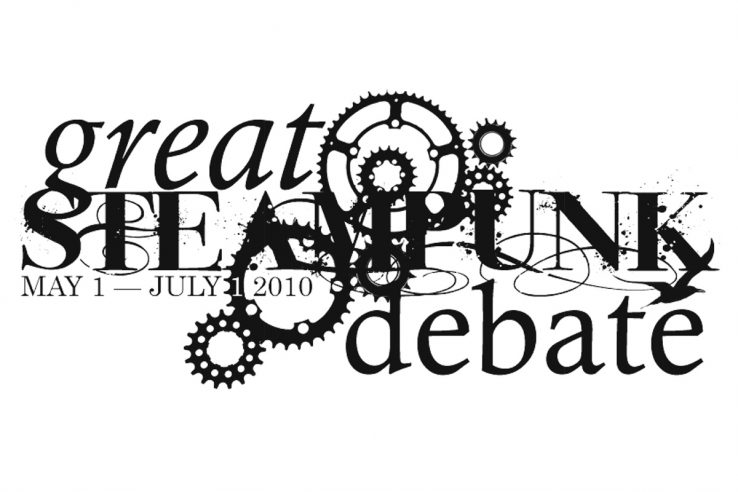Several months after, after the eleventh issue of this magazine, dedicated to “Victorientalism”, sparked fierce debate in the steampunk community about the genre’s complicated relationship with colonialism and race, the owners and editors of some of the community’s most prominent blogs and publications gathered to explore the possibility of organizing a “Great Steampunk Debate”, where, for a limited time, steampunk enthusiasts could come together and discuss the political side of the movement.
The debate would entail the whole of the spectrum of steampunk and ideology, with discussions ranging from the roles of class and gender in the genre to topics about the influence of anarchism and the significance of steampunk’s maker culture.
Preparations
Many months of preparation preceded the debate, with the administrators deciding on topics, forum rules and anticipating how to cope with events that might frustrate the proceedings.
We agreed to be as open and welcoming as possible, therefore no topics or users were banned beforehand; “official” questions were posed in order to inspire discussion, but members would be free to start threads of their own.
The debate was widely advertized at the websites involved and attracted many curious steampunks.
Trouble
Within short time, two separate developments began to trouble the debate, one of which had not been foreseen by the administrators.
We did expect that some of the discussions would be intense, including the topic about steampunk and race and one on the importance of maker culture. Both ended up requiring heavy moderation; the former was even removed from public viewing after one member contacted our hosting service to complain about alleged racism in the thread.
We did not anticipate that a very vocal minority of users would be able to monopolize the debate and discourage others from participating fully.
The administrators discussed the issue at length, with most of us reluctant to ban these members outright. While they were obviously obstructive, and some even continually accused the moderators of censorship whenever it was requested that a topic not be derailed further, we could not agree whether they were actually in violation of the rules which had been drafted in advance.
After urging them repeatedly to be more constructive, and reminding them that the purpose of the Great Steampunk Debate was to explore steampunk ideology, not to impose anyone’s views on others, the administrations ultimately decided on a temporary ban for those members who wouldn’t change their ways.
It was probably too late. Many users had already been driven away from the forum, having little appetite for a discussion in which their opinions were being shouted down by a few disillusioned steampunks with little patience for dissent.
Best and worst
Fortunately, plenty of participants noted that they had enjoyed the opportunity to discuss some of the political questions that steampunk inevitably forces upon us. The Great Steampunk Debate did manage to bring people from different places together for a broad discussion on matters that are hardly ever explicitly addressed.
Sadly, it also brought a few people together who reinforced each others’ self-victimization and proved able to disturb an entire online event. Clearly there are steampunk enthusiasts who are disappointed with what steampunk has become. There are steampunk enthusiasts who feel that that their hobby has been “hijacked” while others yet believe that a prominent few intend to impose their views on the whole of the movement.
Not a united front
Above all, there is no denying that steampunk is not a united front of similarly-minded people. Different polls conducted at the Great Steampunk Debate showed that steampunks hail from many different places, belong to many different cultures and religions, and maintain very different political affiliations, ranging from anarchist to conservative, with the majority identifying as moderate.
It is important to remember that, for many, steampunk is either a hobby or a lifestyle; not a political or social philosophy. Therefore, I’m quite convinced that it’s impossible to gather the whole of the movement for one expression or idea — or even a shared vision of just what steampunk is.
If anything, the Great Steampunk Debate has proven once again that steampunks are very different in many ways. We should remember that steampunk enthusiasts are as diverse as steampunk itself can be. There is no simple answer to the question, “What is steampunk?”
This story first appeared in Gatehouse Gazette 13 (July 2010), p. 3, with the headline “The Great Steampunk Debate”.





